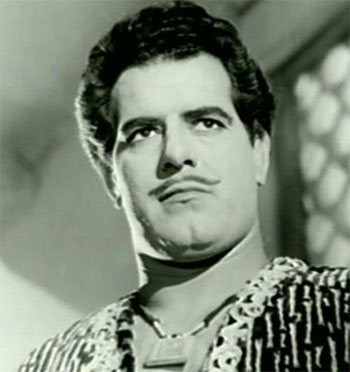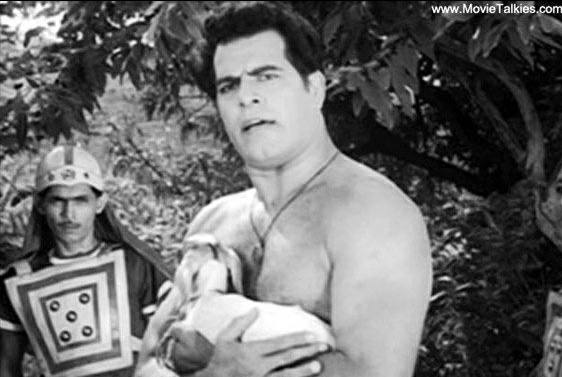DARA SINGH: A RARE COMBINATION OF A WRESTLER AND AN ACTOR LEAVES US BERIEVED

Harjap Singh Aujla
A famous octogenarian wrestler turned film actor Dara Singh has left for his heavenly abode on Thursday July 12, 2012 at around 7:30am Indian Standard Time at his residence in the film city of Mumbai. His mortal remains were consigned to flames, also in Mumbai, the same evening with tears and sorrow. This sad demise of a perfect gentleman has pulled the curtains on an era full of achievements and excitements. The sublime qualities of his head and heart will be sadly missed forever by all those who knew him. The void that he has left will never be filled.

Born as Deedar Singh Randhawa on November 19, 1928, in a dusty hamlet called Dharmu Chak in rural Amritsar, Dara Singh grew up as a strongly built six foot five inch tall young man. At age nineteen in 1947, when Amritsar was passing through the worst period of communal strife, this young man decided to leave for an equatorial South Eastern Asian territory of Malaya. This country was an Imperial British colony. Amritsar during those days was famous for its bold and adventurous people. A lot of Amritsaris during those days had settled in Indonesia, Thailand, Malaya and Singapore. One of Dara Singh’s uncles was living in Malaya (now Malaysia) and it was this uncle, who invited Dara Singh to Malaya. Malaya had rarely seen such a tall and stout young man. His uncle suggested Dara Singh to become a wrestler and Dara Singh agreed on the promise of unlimited nourishing diet, including plenty of his favorite dry fruit almonds. Within a couple of years Dara Singh became a top notch wrestler. Dara Singh became the Champion of Malaya by beating the reigning Malayan champion Tarlok singh, who happened to be another expatriate Indian of Punjabi descent. This victory got him a lot of fame and fortune in Malaya.
In 1952, Dara Singh returned to India, because he wanted to become Indian champion. During those days a Dilip Kumar – Madhubala starrer blockbuster film Sangdil was being shot in Bombay. Dara Singh was offered a small role in this film, which he lapped up gladly. Later on this film became a musical super-hit, due to the superb music composed by Sajjad Hussain.

Films were of course on the radar screen of Dara Singh, but his first and foremost priority was his wrestling career. So he returned to Punjab and Amritsar to be precise. Even during those days Amritsar district was quite famous for the wholesomeness and purity of food, especially its diary products. Dara Singh quickly went on to defeat all the Punjab based wrestlers to assume for himself the title of Rustam – E – Punjab. After that success, Dara concentrated on attaining the coveted title of Rustam – E – Hind, which he did not need to struggle too hard for achieving. His most difficult victory was on the international circuit against the universally accepted world heavy weight champion Kingkong of Australia. Later on he went on a lengthy winning spree and defeated George Gordienko of Canada and John De Silva of New Zealand. Dara Singh combined the skills of Indian style wrestling and the free style wrestling and got the best of both worlds.
While being at the peak of his career as a wrestler, Dara Singh kept toying with the idea of becoming a movie star. Dara Singh was very much alive to his weakness in Urdu, the lingua franca of India’s film industry of those days. All the script writers of India’s filmdom of those days were writers in Urdu language and the finest actors and actresses were adept and affluent in proper Percianized Urdu. Dara Singh, in a wise move, hired a well read Maulvi to teach him the vocabulary and pronunciation of Urdu words. This move paid dividends and Dara Singh soon found his acceptance as a hero in Hindi/Urdu film industry of India.
At a time when big budget Hindi films were flopping in India, Dara Singh chose to be the hero of low budget movies, which incidentally turned into a bonanza for Dara Singh and the not so rich film makers of those days. In all Dara Singh acted in one hundred and twenty one Hindi films between 1960 and 1969 and twenty one Punjabi films between 1970 and almost until his last days. Dara Singh had guest appearances in a couple of South Indian movies too. Dara Singh was featured opposite one on the top heroines of the time Mumtaz, not less than sixteen times. All these films became hits. Dara Singh’s last film appearances were in “Jab We Met” in Hindi and “Dil Apna Punjabi” in Punjabi language. Dara Singh’s epic role was in the character of Hanuman in the nationally acclaimed TV serial “Ramayana” produced by Late Ramanand Sagar.
For the aim of encouraging shooting of films in Punjab, Dara Singh established Dara Studios in Mohali on the outskirts of Chandigarh. This studio has acted as a catalyst for luring the film makers of Bombay to hold outdoor shooting sessions in Punjab. In 2003, Dara Singh was hand-picked by the then Prime Minister of India Atal Bihari Vajpayee for nomination as a member of the Upper House of the Indian Parliament. He served on this position for six years until 2009. During this period he lavishly spent his local area development fund for the promotion of sports facilities in the country in general and Punjab in particular. Even after retirement from the parliament, Dara Singh remained active in the interests of social issues. It was due to his efforts that a number of wrestlers from his village took to the profession of wrestling and made name for themselves. Dara Singh loved Punjab and always yearned to visit Punjab and Amritsar.
I met Dara Singh only a couple of times. The first time I met him was at the official residence of the then Chief Minister of Punjab the Late Giani Zail Singh at the time of the wedding of his daughter Dr. Gurdip Kaur. He was very jovial and cordial. In fact he invited me to visit him in Bombay. Later on during one of my visits to Punjab he met me in Chandigarh. He radiated the same warmth, kinship and smile, which became his hallmark in life.
During the last few days of his life, Dara Singh was not keeping well. He had a desire to breathe his last at his home in the midst of his near and dear ones. That is why he was shifted from the famous Kokilaben Dhirubhai Hospital in Mumbai to his home, where he breathed his last. Time will keep ticking away, the show will go on and on, but the void left by the passing away of this gentleman of multiple talents will never be filled. May his soul rest in peace.